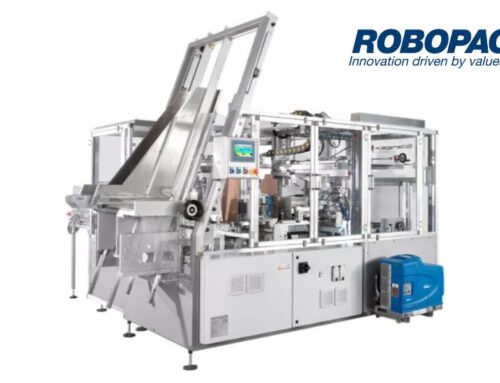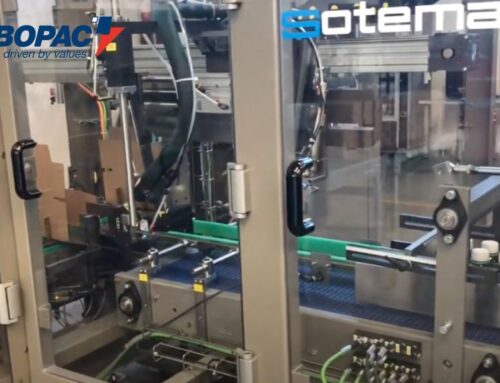When deciding what to do with broken or outdated equipment, packaging professionals and plant managers must weigh their options, including whether to retrofit their machinery or scrap it and invest in new equipment. Retrofitting—upgrading existing machines with the latest technology—is a common solution for many packers, but it comes with its own advantages and drawbacks. In the guide below, we’ll explore the pros and cons of retrofitting older packaging machines and look at the alternatives, like investing in new equipment.
What Is Retrofitting?
Retrofitting involves updating existing equipment with new features or technologies to enhance functionality, improve efficiency, or meet updated safety standards. In packaging machinery, common upgrades include adding advanced control systems like human-machine interfaces (HMI), upgrading motors for better efficiency, or integrating sensors for improved monitoring. These updates help older machines meet modern production needs without requiring full replacement.
For example, retrofitting a stretch wrapping machine with advanced automation can boost performance while preserving the original equipment framework. This approach allows businesses to modernize operations while extending the life and capabilities of their machinery.
The Pros of Retrofitting
The main advantages of retrofitting outdated packing equipment are its reasonable affordability, speedy implementation, and only marginal disruption to operations.
Cost-Effectiveness
Retrofitting is the most budget-friendly solution for upgrading machinery. Instead of purchasing new equipment, companies can add high-tech components to their existing systems, saving thousands of dollars. However, there are limitations to what upgrades companies can add to old machinery.
Speed of Implementation
With shorter lead times and less downtime than replacing equipment, retrofitting is ideal for companies that need a quick upgrade without disrupting operations. Engineers can typically implement certain retrofits, such as updating control systems, in a matter of days.
Minimal Operational Disruption
Because retrofitting maintains a machine’s existing structure, operators and maintenance crews will typically need minimal training to adapt. This reduces the risk of errors and keeps production stable during and after the upgrade.
Leveraging the Existing Knowledge Base
Operators are already familiar with the retrofitted equipment’s basic functions. This eliminates the learning curve with new equipment and ensures that staff can immediately work with the upgraded machine.
The Cons of Retrofitting
We’ve broken down the pros of retrofitting older packaging machines, but what about the cons? The drawbacks of retrofitting outdated equipment are its technological limitations, compatibility issues, and shorter lifespan than new machinery.
Limited Technology Upgrades
While retrofitting adds newer components, it cannot bring a machine on par with the latest, fully modern equipment. For example, an older packaging machine retrofitted with an HMI panel may still lack efficiency compared to a new design with next-generation features.
Compatibility Issues
Integrating new technology into older systems can sometimes result in incompatibility. For instance, upgrading a machine’s controls may require extensive recalibration or software adjustments to work with existing hardware. This could cause extended downtime to fix the issues or result in abandoning the retrofit altogether.
Shorter Lifespan
Although retrofits extend a machine’s life, the improvement still lags behind the longevity of new equipment. A retrofitted machine may last another 10–15 years, but it will still wear out sooner than a brand-new one with a 20–50+ year lifespan.
Limited Suitability for Certain Applications
Retrofitting may not be the best option for machines handling unstable loads or complex operations. For example, when working with tall, light, or heavy loads, specialized solutions like Robopac USA’s rotary arm pallet wrappers provide greater stability and efficiency than retrofitting existing stretch wrapping systems.
Alternatives to Retrofitting
However, retrofitting is far from the only option available to plant managers and machine operators. Instead of upgrading older machines, packaging engineers can also invest in brand-new equipment.
The Benefits of Investing in New Equipment
New equipment offers several advantages for businesses. Modern machines come with advanced features that can significantly improve operational performance and efficiency. They also expand production capabilities, enabling companies to explore new product lines and diversify their offerings.
With proper maintenance, new equipment can provide 20 to 50 or more years of usability, making it a long-term investment. Downtime caused by swapping out old equipment for new machinery can also be kept to a minimum with proper installation and careful management. The result is a brand-new machine that contains the latest technology features that will last for decades to come.
The Drawbacks of Purchasing New Machinery
However, there are also disadvantages to consider. The higher upfront costs of purchasing new equipment can make this option challenging for businesses with tight budgets. Furthermore, operators and maintenance teams may need additional training to fully understand and operate the latest systems, which could require extra time and resources. Companies must weigh these factors carefully when deciding whether to invest in new equipment.
Making the Right Decision
When it comes to deciding what’s best for your company and end-of-line packaging, there are many factors to consider. From your available budget to the condition of your current machinery, think deeply about your packaging and operations needs before deciding what’s best for your business.
Budget
Your budget plays a crucial role in deciding whether to retrofit or replace equipment. Retrofitting is a cost-effective option that enables incremental improvements without the expense of purchasing new machinery. Replacing the equipment with brand-new machinery is the highest up-front cost but provides greater long-term durability and return on investment.
Operational Goals
Your decision should align with your operational priorities. If minimizing downtime and disruption is key, retrofitting is the quickest and least intrusive solution. However, companies that focus on long-term growth and innovation should consider replacing the equipment if they want machinery with the best and most advanced technology for greater performance and future-proofing.
Condition of Existing Equipment
The current state of your machinery should guide your choice. Retrofitting works best for equipment that is still functional but needs small updates to improve performance.
However, if your equipment is nearing the end of its utility, retrofitting will only slightly delay its eventual expiration. Instead of investing money into an obsolete machine that may only last for a few more months or years, it’s a better investment to purchase brand-new packaging machinery that provides the best technology and will last for decades.
Maximize Efficiency With New Robopac USA Equipment
The decision to retrofit or purchase new packaging equipment is critical to maintaining operational efficiency and meeting production goals. By carefully evaluating the condition of your existing machinery and weighing the pros and cons of each option, you can ensure that your investment drives success.
If your end-of-the-line packaging machinery is nearing the end of its usefulness, there’s no better place to find premium replacement equipment than Robopac USA. From stretch wrappers to packers and palletizers, we’ve got everything you need to make your packaging processes more efficient and reliable. Learn more about our machinery online, or contact our staff to speak with an expert today.








